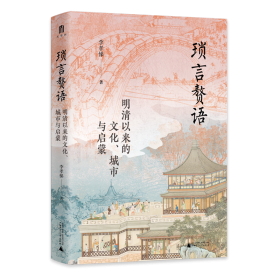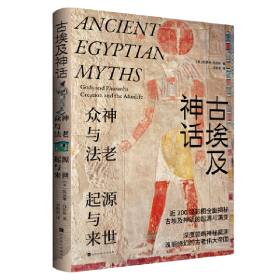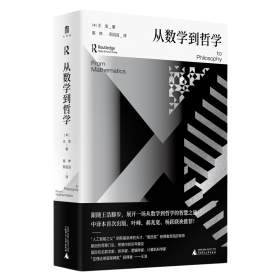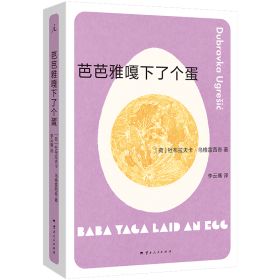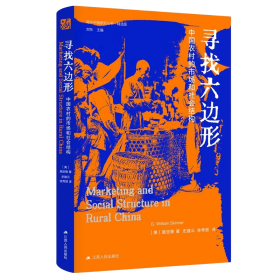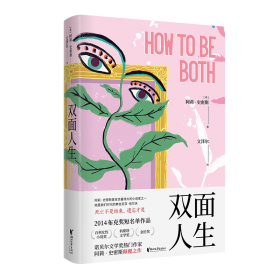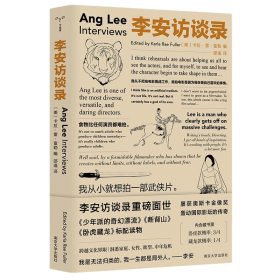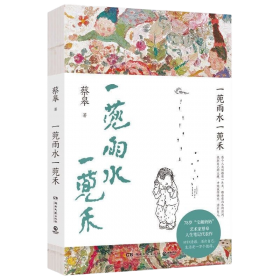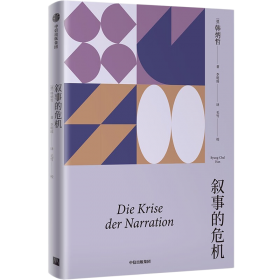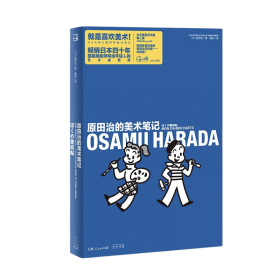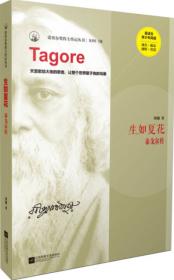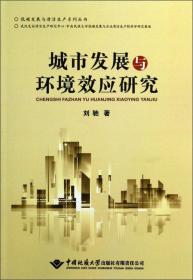上装适体性研究
出版时间:
2007-10
版次:
1
ISBN:
9787560525884
定价:
30.00
装帧:
平装
开本:
16开
纸张:
其他
页数:
208页
正文语种:
简体中文
-
《上装适体性研究》是作者在英国曼彻斯特大学攻读博士学位期间研究工作的结晶,亦是作者多年在服装工程领域教学与研究的经验总结。主要研究服装结构对于服装适体性和运动功能性的影响,并从结构上解决或弱化造型与运动功能性的矛盾。《上装适体性研究》由七章组成。第一章介绍研究背景和目的。第二章研究三维人体扫描方法在人体非标准姿势测量中的应用。第三章通过石膏法的应用,获得不同姿势的人体原型,并精确测量人体尺寸。第四章以石膏法中所获得的不同姿势的原型为基础,利用服装软件“COAT4.1”设计不同的放松量进行纸样制作,从而制作出实际的服装。第五章设计并应用压力传感器,测量当人体处于不同姿势时服装与人体之间的压力。第六章通过不同姿势的人体尺寸调查,对适体成衣中的放松量效果进行评价。第七章对全书进行总结。 1.Introduction
1.1Garment-MakingSystems
1.1.1HauteCouture
1.1.2BlockPatterns
1.1.3PatternDrafting
1.2BackgroundtotheResearch
1.3ProposedSolution
1.4AimsandObjectives
2.LiteratureReview
2.1AStudyoftheShoulderGirdle
2.1.1DescriptionoftheShoulderGirdle
2.1.2TheFunctionoftheHumanBodyandtheClothingShoulderGirdle
2.2AnthropometricalStudyforClothingApplication
2.2.1SizingSystem-AnthropometricalStudy
2.2.2DevelopmentinAnthropometricMethods
2.3MovementFunctioninClothingComfortandFit
2.3.1HumanBodyMovement
2.3.2DescribingBodyMovement
2.3.3ApplyingDataonBodyMovementtoClothingDesign
2.3.4ClothingComfortandFit
2.4SystemofPatternConstruction
2.4.1Modelling
2.4.2DraftingSystem
2.4.3BlockPatternConstruction
2.5TheFittingProcessandEaseDesign
2.5.1GeneralBackgroundofFitting
2.5.2TypesofFit
2.5.3TheAmountofEase
3.Comparisonof3DBodyScanningwithManualMeasurementofDynamicPostures
3.1Introduction
3.2Methodology
3.3TheManualMeasurementMethod
3.3.1ManualMeasurementResults
3.3.2AnalysisofExperimentalResultsofManualMeasurement
3.4Three-DimensionalBodyScanningMeasurementMethod
3.4.1HighlightLandmarksontheBody
3.4.2Three-DimensionalBodyScanningMeasurementResult
3.4.3AnalysisofExperimentalResultsof3DMeasurement
3.5ComparisonBetweentheResultof3DBodyScanningandManualMeasurementofDynamicPostures
3.6AnalysisofMeasurementErrors
3.7Summary
4.DesignClothingbythePlasterMethod
4.1GeneralBackground
4.2ExperimentalWork
4.2.1PreparingtheExperiment
4.2.2ExperimentProcess
4.2.3ExperimentalResult
4.3ThePlasterCastPattern
4.3.1ThePatternfortheNaturalPosition
4.3.2ComparedthePlasterPatternsofTheseThreePostures
4.4CreationofCADPatternsDerivedfromthePlasterCast
4.4.1AboutCOAT4.1
4.4.2CreationofCOATPatternfromPlasterCast
4.5PracticalGarmentDesign
4.5.1PatternDesignforLimitedMovement-BasedontheNaturalPosition
4.5.2PatternDesignforLooseFitBlouse-BasedonLiftl80PlasterCast
4.5.3PatternDesignforaSemi-FittedBlouse-BasedonH180PlasterCast
4.5.4ComparingPatternMeasurementsforDifferentLevelsofFit
4.6TheFabricChoice
4.6.1KESResultsandAnalysis
4.6.2MaterialAnalysisoftheChosenFabric
4.7TheFinishedRealClothes
5.TransducerApplicationintheResearch
5.1ConstructionandOperationalPrinciplesofthePressureTransducer
5.2TransducerDesign
5.2.1TheFirstSensor
5.2.2TheSecondSensor
5.2.3TheThirdSensor
5.2.4TheFourthSensor
5.3TheOtherEquipmentRequiredintheExperiment
5.4TransducerCalibration
5.5ChoosingMeasurementPointsontheBody
5.6ExperimentProcedure
5.6.1ResultsforClothesBasedontheNaturalBlock
5.6.2ResultsforClothesBasedontheL180Block
5.6.3ResultsforClothesBasedontheH180Block
5.7AnalysisandConclusionsfromGarmentPressureMeasurements
6.SizeSurvey
6.1PurposeofSurvey
6.2SubjectSource
6.3SettingMeasurementItems
6.4AnalysisBasicMeasurementsoftheSurvey
6.5AnalysisParticularMeasurementsoftheSurvey
6.5.1GirthChangeforDifferentPostures
6.5.2LengthDifferencesinDifferentPostures
6.6ClothingSizeSurveyforFittingTest
6.6.1FurtherAnalysisoftheSubjectswithSmallSize
6.6.2SampleSource
6.6.3MeasuringtheClothes
6.6.4AnalysisofEaseinDifferentPartsforDifferentPostures
6.7ComparetheResultsfromPlasterMethodwiththatfromSizeSurvey
6.8OptimisingStyleandDynamicComfortfromSleeveConstruction
6.8.1AddingEasetotheBacktoImproveDynamicComfort
6.8.2AddingAppropriateBackandSleeveWidthforComfort
6.8.3ConcealingthePleat
6.8.4ManipulatingStyle,ProportionandConstructiontoProvideEase
6.8.5TheHemSolutionWhentheArmsAreRaised
6.8.6SettingtheFront-BackPartitionImproveDynamicFreedom
6.8.7DetachableGarmentSegmentsHelptoDetermineBodyExpansion
6.9Summary
7.ConclusionsandRecommendationsforFurtherWork
References
Appendix1
Appendix2
Appendix3
Appendix4
Appendix5
Acknowledgement
-
内容简介:
《上装适体性研究》是作者在英国曼彻斯特大学攻读博士学位期间研究工作的结晶,亦是作者多年在服装工程领域教学与研究的经验总结。主要研究服装结构对于服装适体性和运动功能性的影响,并从结构上解决或弱化造型与运动功能性的矛盾。《上装适体性研究》由七章组成。第一章介绍研究背景和目的。第二章研究三维人体扫描方法在人体非标准姿势测量中的应用。第三章通过石膏法的应用,获得不同姿势的人体原型,并精确测量人体尺寸。第四章以石膏法中所获得的不同姿势的原型为基础,利用服装软件“COAT4.1”设计不同的放松量进行纸样制作,从而制作出实际的服装。第五章设计并应用压力传感器,测量当人体处于不同姿势时服装与人体之间的压力。第六章通过不同姿势的人体尺寸调查,对适体成衣中的放松量效果进行评价。第七章对全书进行总结。
-
目录:
1.Introduction
1.1Garment-MakingSystems
1.1.1HauteCouture
1.1.2BlockPatterns
1.1.3PatternDrafting
1.2BackgroundtotheResearch
1.3ProposedSolution
1.4AimsandObjectives
2.LiteratureReview
2.1AStudyoftheShoulderGirdle
2.1.1DescriptionoftheShoulderGirdle
2.1.2TheFunctionoftheHumanBodyandtheClothingShoulderGirdle
2.2AnthropometricalStudyforClothingApplication
2.2.1SizingSystem-AnthropometricalStudy
2.2.2DevelopmentinAnthropometricMethods
2.3MovementFunctioninClothingComfortandFit
2.3.1HumanBodyMovement
2.3.2DescribingBodyMovement
2.3.3ApplyingDataonBodyMovementtoClothingDesign
2.3.4ClothingComfortandFit
2.4SystemofPatternConstruction
2.4.1Modelling
2.4.2DraftingSystem
2.4.3BlockPatternConstruction
2.5TheFittingProcessandEaseDesign
2.5.1GeneralBackgroundofFitting
2.5.2TypesofFit
2.5.3TheAmountofEase
3.Comparisonof3DBodyScanningwithManualMeasurementofDynamicPostures
3.1Introduction
3.2Methodology
3.3TheManualMeasurementMethod
3.3.1ManualMeasurementResults
3.3.2AnalysisofExperimentalResultsofManualMeasurement
3.4Three-DimensionalBodyScanningMeasurementMethod
3.4.1HighlightLandmarksontheBody
3.4.2Three-DimensionalBodyScanningMeasurementResult
3.4.3AnalysisofExperimentalResultsof3DMeasurement
3.5ComparisonBetweentheResultof3DBodyScanningandManualMeasurementofDynamicPostures
3.6AnalysisofMeasurementErrors
3.7Summary
4.DesignClothingbythePlasterMethod
4.1GeneralBackground
4.2ExperimentalWork
4.2.1PreparingtheExperiment
4.2.2ExperimentProcess
4.2.3ExperimentalResult
4.3ThePlasterCastPattern
4.3.1ThePatternfortheNaturalPosition
4.3.2ComparedthePlasterPatternsofTheseThreePostures
4.4CreationofCADPatternsDerivedfromthePlasterCast
4.4.1AboutCOAT4.1
4.4.2CreationofCOATPatternfromPlasterCast
4.5PracticalGarmentDesign
4.5.1PatternDesignforLimitedMovement-BasedontheNaturalPosition
4.5.2PatternDesignforLooseFitBlouse-BasedonLiftl80PlasterCast
4.5.3PatternDesignforaSemi-FittedBlouse-BasedonH180PlasterCast
4.5.4ComparingPatternMeasurementsforDifferentLevelsofFit
4.6TheFabricChoice
4.6.1KESResultsandAnalysis
4.6.2MaterialAnalysisoftheChosenFabric
4.7TheFinishedRealClothes
5.TransducerApplicationintheResearch
5.1ConstructionandOperationalPrinciplesofthePressureTransducer
5.2TransducerDesign
5.2.1TheFirstSensor
5.2.2TheSecondSensor
5.2.3TheThirdSensor
5.2.4TheFourthSensor
5.3TheOtherEquipmentRequiredintheExperiment
5.4TransducerCalibration
5.5ChoosingMeasurementPointsontheBody
5.6ExperimentProcedure
5.6.1ResultsforClothesBasedontheNaturalBlock
5.6.2ResultsforClothesBasedontheL180Block
5.6.3ResultsforClothesBasedontheH180Block
5.7AnalysisandConclusionsfromGarmentPressureMeasurements
6.SizeSurvey
6.1PurposeofSurvey
6.2SubjectSource
6.3SettingMeasurementItems
6.4AnalysisBasicMeasurementsoftheSurvey
6.5AnalysisParticularMeasurementsoftheSurvey
6.5.1GirthChangeforDifferentPostures
6.5.2LengthDifferencesinDifferentPostures
6.6ClothingSizeSurveyforFittingTest
6.6.1FurtherAnalysisoftheSubjectswithSmallSize
6.6.2SampleSource
6.6.3MeasuringtheClothes
6.6.4AnalysisofEaseinDifferentPartsforDifferentPostures
6.7ComparetheResultsfromPlasterMethodwiththatfromSizeSurvey
6.8OptimisingStyleandDynamicComfortfromSleeveConstruction
6.8.1AddingEasetotheBacktoImproveDynamicComfort
6.8.2AddingAppropriateBackandSleeveWidthforComfort
6.8.3ConcealingthePleat
6.8.4ManipulatingStyle,ProportionandConstructiontoProvideEase
6.8.5TheHemSolutionWhentheArmsAreRaised
6.8.6SettingtheFront-BackPartitionImproveDynamicFreedom
6.8.7DetachableGarmentSegmentsHelptoDetermineBodyExpansion
6.9Summary
7.ConclusionsandRecommendationsforFurtherWork
References
Appendix1
Appendix2
Appendix3
Appendix4
Appendix5
Acknowledgement
查看详情
-
九五品
江苏省南京市
平均发货14小时
成功完成率92.51%
-
 6
6
九五品
上海市浦东新区
平均发货4小时
成功完成率97.03%
-
九品
北京市昌平区
平均发货6小时
成功完成率86.27%
-
 7
7
九品
北京市昌平区
平均发货9小时
成功完成率88.85%
-
 3
3
八五品
陕西省西安市
平均发货10小时
成功完成率92.42%

 占位居中
占位居中












